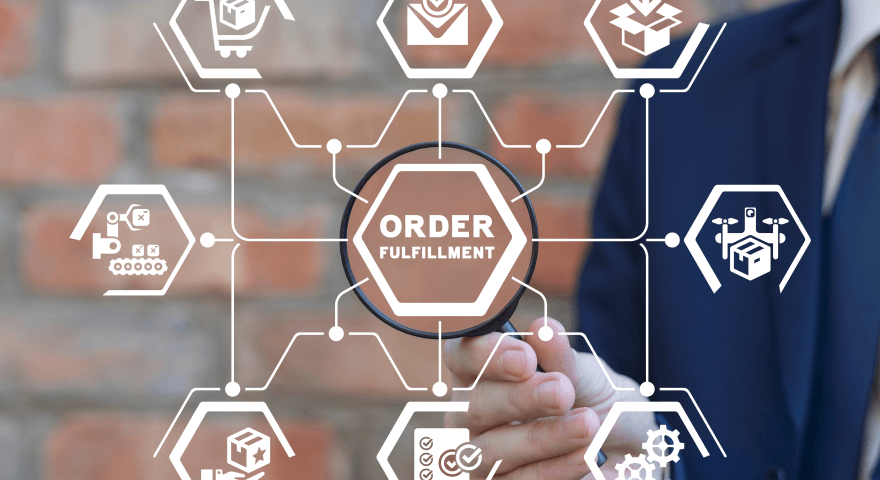“Decision-Making refers to the process of selecting a course of action or making a choice among available alternatives. It involves assessing different options, evaluating their potential outcomes or consequences, and then deciding on the best course of action based on relevant criteria, preferences, and available information. Decision-Making can be influenced by various factors, such as personal values, rational analysis, emotions, past experiences, and the level of uncertainty or risk associated with the decision. Effective Decision-Making involves critical thinking, problem-solving skills, weighing pros and cons, considering the potential impact of the decision, and ultimately making a well-informed and rational choice."1
Definitions are important. This is why we asked ChatGPT, the AI based chat-bot developed by Open AI, to define Decision-Making. The Oxford Advanced Learner’s Dictionary instead settles it as “the process of deciding about something important, especially in a group of people or in an organization”.
Given these definitions, it goes without saying that such a paradigm is fundamental in the everyday life of each company or organization, to drive better functioning of it. It is a continuous and dynamic activity affecting all other activities pertaining to the organization. The general statement which needs to be always considered is that “you cannot solve a problem without making a decision”. Ideally, making decisions for an organization is “like breathing air”.
This brings to the definition of three general steps for a Decision-Making process (other approaches define six steps, which are just a more granular version of what follows:
1. Problem identification and definition
2. Determination of alternatives
3. Evaluation and selection
In Supply Chain Management, the Decision-Making process is highly complex and influenced by many factors. In Mentzer et al. (2001)2, a supply chain is defined as “the network of organizations that are involved, through upstream and downstream linkages, in the different processes and activities that produce value in the form of products and services delivered to the ultimate consumer.” This definition describes well the great complexity which characterizes supply chains, due to several factors, including the involvement of multiple stakeholders, extensive networks, diverse processes, and the need for precise timing and synchronization.
In general, considering supply chain as a system, which is the total of the elements having a relationship in a certain domain, this could be affected by a problem, namely a deviation from something expected or an aimed status. This leads to the identification of one or more decision problems, which can be solved by a decision and an execution process, building a loop as specified by the three steps previously listed.
This description is also influenced by the many factors which can affect the whole process, and which need to be considered: amount and quality of information and data, state of the environment, uncertainties, interdependencies are all fundamental factors from which the success of a course of actions following specific decisions is highly dependent.
Additionally, it must be considered that we live in a VUCA world, which threatens the establishment of efficient supply chains, posing challenges, as disruptive events, going beyond the difficulties already given by “normal operations”. Those challenges demand quick and steady reactions, to avoid undesired cascade effects.
Artificial Intelligence (AI) and Big Data come into play to answer exactly these needs. Such complexity in fact requires robust technologies like AI to tackle the intricacies involved. AI-powered solutions can provide real-time visibility, data-driven insights, and optimization capabilities, allowing supply chain managers to navigate the complexities, achieve synchronization, and optimize timing to meet customer expectations efficiently. For instance:
● A retail company can use AI-powered demand forecasting models to predict the popularity of products during specific seasons or events, enabling them to adjust production and procurement accordingly.
● AI enables real-time monitoring and visibility across the supply chain, providing insights into inventory levels, order status, transportation tracking, and potential disruptions. AI-powered analytics can process vast amounts of data from multiple sources, to offer a comprehensive view of the supply chain. This helps in identifying bottlenecks, anticipating disruptions, and enabling proactive decision-making.
● A delivery service provider can use AI to dynamically optimize delivery routes based on real-time traffic data, weather conditions, and changing customer requirements.
These are just few examples of possible applications, which are drastically changing the supply chain scenario and how the Decision-Making process is carried out in this context.
AI for Decision-Making in Supply Chain Management: Opportunities, Risks, and Challenges
It is not by chance that we decided to open this article by asking a tool like ChatGPT for a definition of Decision-Making. In fact, the Open AI chat-bot is an astonishing example of the capabilities of modern AI algorithms. The possible applications are countless, thereby implying a profound transformation of the job market, of business and industry overall.
This is not only related to specific jobs and qualifications which AI could take over but also to the deep modifications in the everyday way of working caused by algorithms and chat-bots. Already in 2019 Gartner published an article3 with the following statement:
“By 2022, 70% of white-collar workers will interact with conversational platforms on a daily basis.”
As ChatGPT was released last year by Open AI, now we know that this prediction was basically correct. This huge transformation is still ongoing, and it is obviously affecting every field.
As we have seen, when it comes to Decision-Making in supply chain management the advantages given by AI are multiples, from the automation of operations to efficient forecast and optimization of inventories, sales, and planning. In this sense, we must distinguish what could be really automated by using AI and what still demands human actions. Decisions could be divided into three categories, operational, tactical, and strategic, characterized by their intrinsic value for the company or the organization, namely low, medium, and high. In the context of supply chain, they can be described as follows:
● Operational decisions: They are short-term, day-to-day choices focusing on the execution of specific tasks within the supply chain. They are aimed at ensuring smooth operations, addressing immediate challenges and often can be repetitive. Examples in this sense could be order fulfillment, managing inventory levels or delivery scheduling.
● Tactical decisions: These are medium-term decisions that focus on optimizing operational processes and resources within the framework set by strategic decisions. They involve translating strategic objectives into actionable plans and are usually less structured and repeatable than the operational level. Good examples are S&OP or supplier relationship management.
● Strategic decisions: These are the long-term, high-level decisions that significantly impact the overall supply chain strategy. Usually, they belong to the highest level of an organization or a department, pertaining to the management responsibilities. In fact, they involve setting the direction, goals, and policies of the supply chain network, for example building up the whole network design or selecting the suppliers.
As the value of decisions, from operational to strategic, increases, on the other hand their volume diminishes. It is evident that with the state of the art, it is beyond our possibilities automating strategic decisions. On the other hand, operational, and sometimes tactical decisions, can undergo a process of automation by AI and other algorithms, based on the data analysis and visualization, on forecasts and simulations.
An article published by McKinsey in 2022 describes well the advantages of AI in the context of automating Decision-Making processes and building integrated systems for end-to-end supply chain management4. Integrating an entire end-to-end supply chain, by running most processes and decisions through real-time, autonomous planning, is the key to reduce costs, increase revenue and optimize the whole S&OP.
Does this mean that in the next future we are getting rid of humans in supply chain management and that machines are going to take full responsibility of the Decision-Making process? Could a ChatGPT-based copilot take over and become the pilot? At the current stage, certainly not. Following McKinsey’s view, one of the fundamental elements to deploy autonomous planning is the digitalization of supply chains, via analytics and AI-based technologies integrated across the whole stack. Our goal as innovators is to give a clear understanding of the supply chain and optimize it for specific variables and KPIs. In this framework, reduction of human oversight and automation of Decision-Making is surely required to hit the target. However, the role of humans remains crucial in the framework of AI-enabled supply chain management. While AI brings significant advancements and automation to Decision-Making processes, it doesn't render human involvement irrelevant. Instead, it shifts the nature of human roles and enhances their capabilities in several ways. Human oversight is, and will still be needed when it comes to:
● Strategic Decision-Making
● Complex problem solving
● Relationships management
● Ethical and social considerations
Obviously, the use of AI and the transformation which is coming with it entails several risks and challenges. There are two main risk factors: bias and lack of transparency (and therefore interpretability). Both can compromise results and performance, undermining the trust of customers, partners, and stakeholders. Another relevant topic, which can affect Decision-Making with respect to AI adoption, is constituted by ethical implications.
We must ask ourselves questions like: what would happen if our company should run out of stock due to a wrong decision taken by a biased AI model? Are we ready to accept a replenishment model fully managed by algorithms? What if a copilot recommends changing the transportation route in a completely unexpected way, to optimize and synchronize lead times?
The risks previously described cannot be fully removed, but they can be minimized and controlled, by implementing control strategies, introducing the right professionals, and developing awareness among employees. Organizations will experience an increasing need to create dedicated roles to coordinate specific aspects of autonomous planning across business units and throughout the end-to-end chain and to train capabilities and competences adapt to support this transformation.
aioneers has embraced this paradigm, as the AIO Supply Chain Command Center (AIO SCCC) aims to fulfill these needs by closing the loop between the management and visualization of the supply chains, the Decision-Making process via intelligent apps, including the Copilot, and the implementation of such decisions and measures. In our solution the end-to-end supply chain is captured and visualized in real time. Machine-learning and automated, intelligent algorithms continuously analyze events, enable Decision-Making and recommend measures, allowing the implementation of necessary activities to improve supply chain performance.
This closes the loop from generating insights, making intelligent decisions, and achieving impact through result-oriented supply chain improvement execution. Our goal for the foreseeable future is to further empower our solution. On one hand we aim to increase the degree of automation and the focus on the Decision-Making process, moving toward a Decision-Centric approach (stay tuned for our upcoming White Paper on Decision-Centricity in Supply Chain Management). On the other hand, we want to do it properly, building a safe, trustable, and ethical framework.
Learn more about our ethical guidelines from the Whitepaper "aioneers policy on ethical AI"
References:
- Text generated by ChatGPT, June 30, 2023, OpenAI, https://chat.openai.com
- Mentzer, J. T., DeWitt, W., Keebler, J. S., Min, S., Nix, N. W., Smith, C. D., & Zacharia, Z. G. (2001). Defining supply chain management. Journal of Business Logistics, 22, 1–25
- https://www.gartner.com/smarterwithgartner/chatbots-will-appeal-to-modern-workers
- https://www.mckinsey.com/capabilities/operations/our-insights/autonomous-supply-chain-planning-for-consumer-goods-companies




.jpg)



.png)
